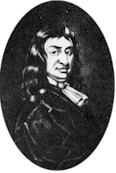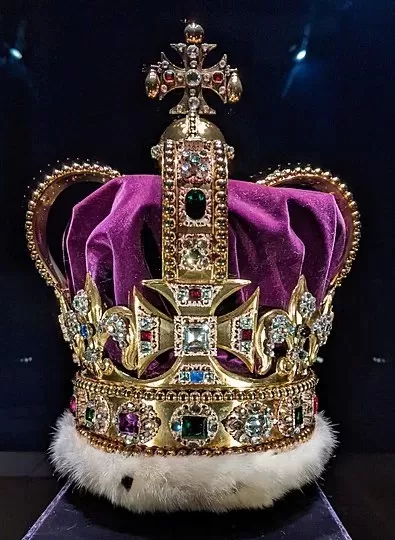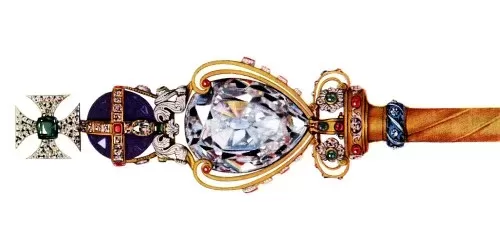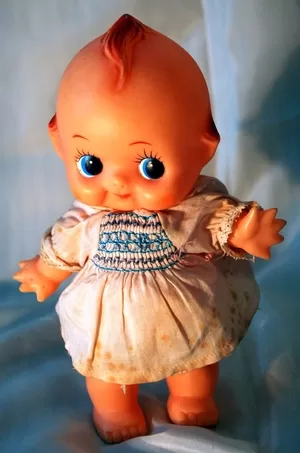The 2019 theft of €113.8 million in jewels, including the Queen’s Jewellery, from the Historic Green Vault in the Royal Palace Dresden had us wondering if the British Crown Jewels have ever been stolen. It turns out that Colonel Blood tried in 1671 …
Colonel Thomas Blood was an Irishman with a colourful history. He fought for Oliver Cromwell’s Parliamentary forces during the English Civil War.


In 1663, Thomas Blood and his colleagues raided Dublin Castle and attempted to kidnap the Lord Lieutenant, the Duke of Ormonde. This attempt failed, but seven years later, Blood again tried to capture the Duke. This time the Duke was in London, and Blood did seize him but released him soon afterwards.
Colonel Thomas Blood
The Plot to Steal the British Crown Jewels
Around the 6th May in 1671, Thomas Blood and a woman posing as his wife visited The Jewel House in the Tower of London. Soon after arriving the woman pretended to have stomach cramps.
The newly appointed Master of the Jewel House was a 77 year old retired servant Talbert Edwards. Edwards, who was living in the Tower with his wife, took the woman upstairs into his quarters so that Mrs Edwards could attend to her.
On the 9th May 1671, at seven o’clock in the morning Colonel Blood, dressed as a parson and three well-dressed young men, visited the Martin Tower to see the regalia.
Blood brought four pairs of gloves as a present for Mrs Edwards as a thank you for her attentions to his own wife. Colonel Blood convinced Talbert Edwards to show to the Crown Jewels to the group while Mrs Edwards prepared a meal for them.


One of the gang made a pretence to stand near the door, as look out, while the others entered the jewel chamber. Blood pulled out a mallet from under his cloak and struck Edward’s on the head. His accomplices bound and gagged Edwards.
Colonel Blood took St. Edward’s Crown and started to flatten it with the mallet so it would fit into his cassock pocket.
St Edward’s Crown is 22-carat gold, and was re-set in 1911 to feature 444 precious and semi-precious stones, including 345 rose-cut aquamarines, 37 white topazes, 27 tourmalines, 12 rubies, 7 amethysts, 6 sapphires, 2 jargoons, 1 garnet, 1 spinel and 1 carbuncle – shown above.
Another conspirator, Blood’s brother-in-law Hunt, filed away at the Sceptre with the Cross trying to cut it in half so it wold fit into their bag.
The Sceptre with the Cross was made in 1661, 92 cm (3 ft) long, weighing around 1.17 kg (2.6 lb), and was decorated with 333 diamonds, 31 rubies, 15 emeralds, 7 sapphires, 6 spinels, and 1 composite amethyst.


In 1910, it was redesigned to incorporate Cullinan I, also known as the Great Star of Africa, which, at over 530 carats (106 g), is the largest clear cut diamond in the world. The picture shows the current setting.
While Colonel Blood was flattening the King’s Crown with the mallet, and Mr Hunt was sawing the Sceptre in half, the third man, Mr Perrot, put the Sovereign’s Orb into his breeches.


Since 1661 the Sovereign’s Orb is a hollow gold sphere about 16.5 cm (6.5 in) in diameter and weighs 1.2 kg (2.6 lb).
A band of gems and pearls runs around the Orb’s equator and there is a half-band on the top hemisphere. Atop the orb is an amethyst surmounted by a jewelled cross, with a sapphire on one side and an emerald on the other. Altogether, the orb is decorated with 375 pearls, 365 diamonds, 18 rubies, 9 emeralds, 9 sapphires, 1 amethyst and 1 piece of glass.
Mr Edward’s son Wythe arrived unexpectedly on leave from military service abroad and, after challenging the accomplice who was on look-out, went upstairs.
At around the same time, the elder Edwards managed to free his gag, and shouted:
“Treason! Murder! The crown is stolen!”
Blood and his gang fled the scene, but the gang were caught after a musket shoot out on Tower wharf.
While struggling with his captors, Blood shouted:
“It was a gallant attempt, however unsuccessful! It was for a crown!
The Crown Jewels were recovered although several stones were missing and others were loose.
Blood refused to answer to anyone but the King and was taken to the palace in chains, where he was questioned by King Charles and Prince Rupert. King Charles asked Blood:
“What if I should give you your life?”
Colonel Blood replied:
“I would endeavour to deserve it, Sire!”
Far from being punished, Blood was pardoned, awarded land in Ireland worth £500 a year, and made welcome at court!
Shortly after Blood’s pardon the diarist Evelyn met him at Whitehall, and later wrote down his opinion:
‘How he ever came to be pardoned and ever received into favour, not only after this but several other exploits almost as daring, both in Ireland and here, I never could come to understand. This man had not only a daring, but a villainous unmerciful look, a false countenance, but very well spoken, and dangerously insinuating.’
The Jewel-House Master, Talbot Edwards was awarded a grant of £200 but it proved so hard for him to get the money that he sold his right to it for the amount in cash, and returned to his duties at the Tower regaling visitors with his tales of the attempted theft until his death in 1674.
John Wilmot, 2nd Earl of Rochester wrote in History of Insipids:
Blood, that wears treason in his face,
Villain complete in parson’s gown,
How much he is at court in grace
For stealing Ormond and the crown!
Since loyalty does no man good,
Let’s steal the King, and outdo Blood!
Since Blood’s foiled attempt to steal the British Crown Jewels that fate-full day in 1671, there has been no further threat to steal the jewels.
The attempted robbery led to a severe tightening up of security and the procedure for displaying the Crown Jewels, including the posting of an armed guard by the door of the chamber in the Martin Tower.
The jewels remained in the Martin Tower until 1841 when following the great fire at the Tower a new secure building was constructed to house them.
In 1679 the Duke of Buckingham sued Blood for £10,000 for insulting remarks Blood had made about his character.
Colonel Blood died in 1680 and is buried in Christchurch Gardens near St. James’s Park.
Blood’s body was exhumed when it was suspected he might have faked his death to avoid paying his debt to Buckingham.
Blood’s epitaph read:
Here lies the man who boldly hath run through
More villainies than England ever knew;
And ne’er to any friend he had was true.
Here let him then by all unpitied lie,
And let’s rejoice his time was come to die.
Related feature stories
Stolen Crown Jewels from the Royal Palace Dresden
World’s most exquisite pink diamonds at Melbourne Museum
Williamson Pink Star – Pure pink diamond sets auction record
What are the world’s largest gold nuggets? Famous Australian Gold Nuggets
Police Ephemera ° The value of Victorian reward posters
Art Theft at Isabella Stewart Gardner Museum in Boston
INTERPOL’s global database of Stolen Works of Art
FBI Top Ten Art Crimes, FBI Art Crimes Team – Updated





